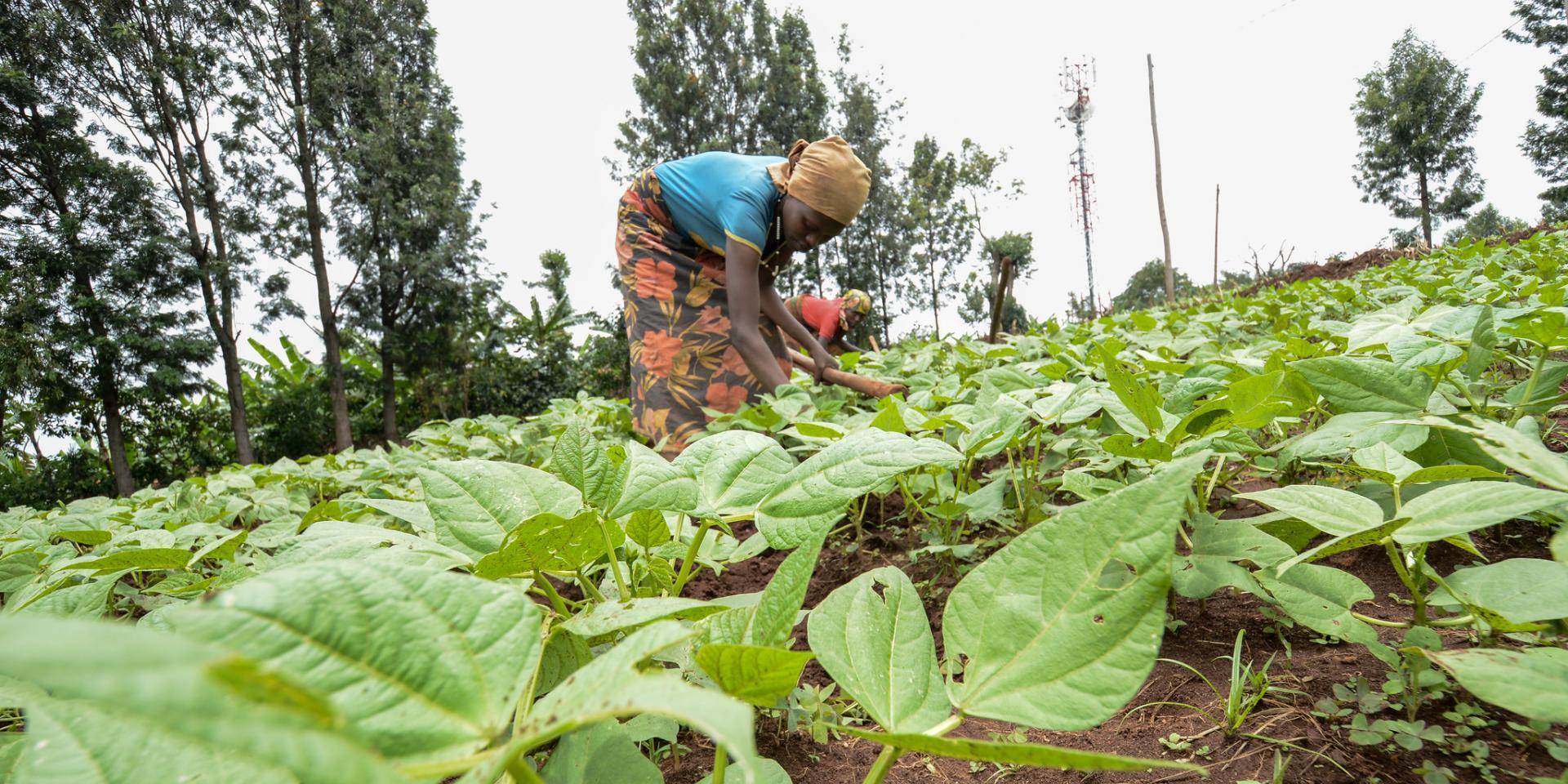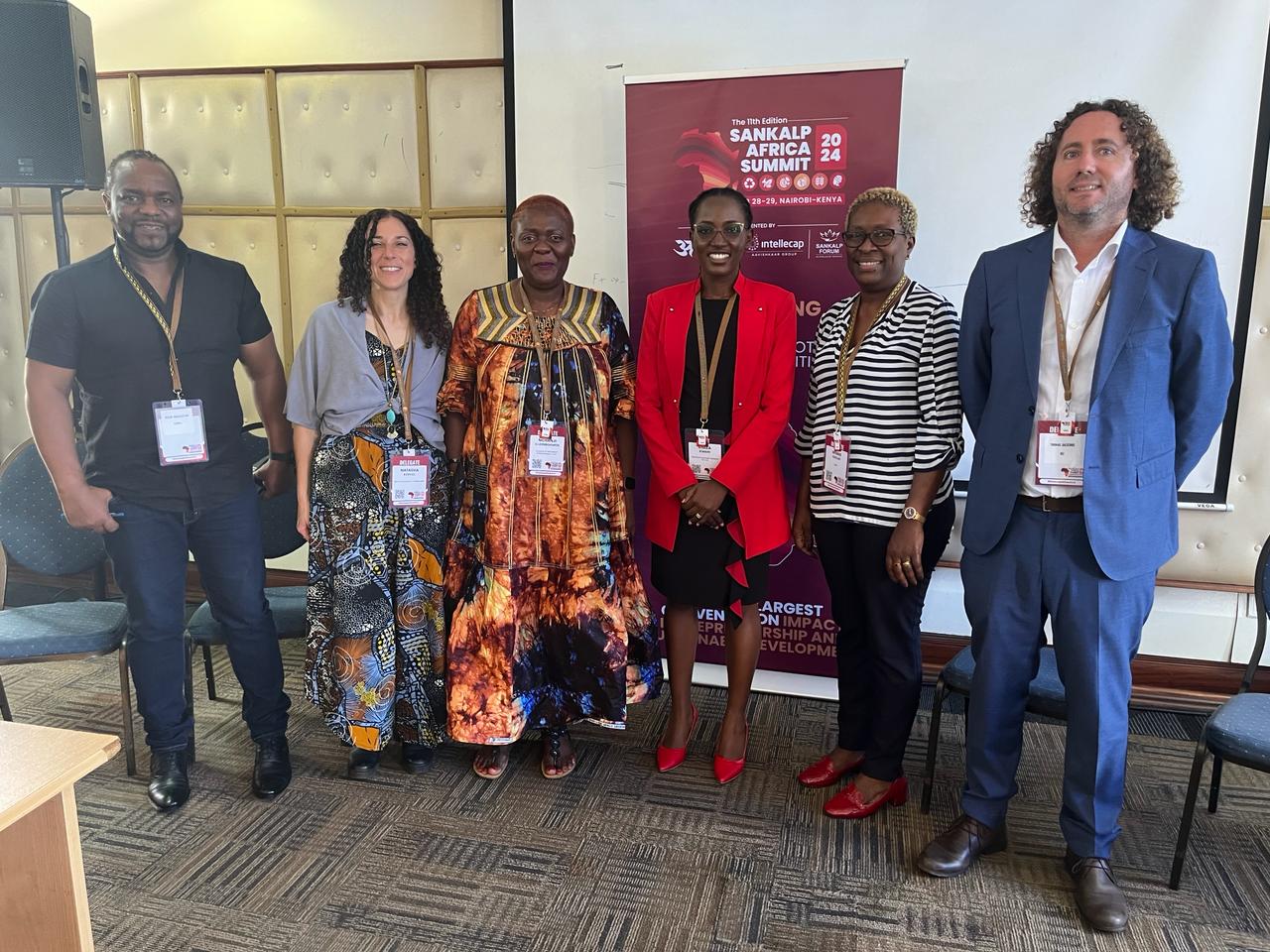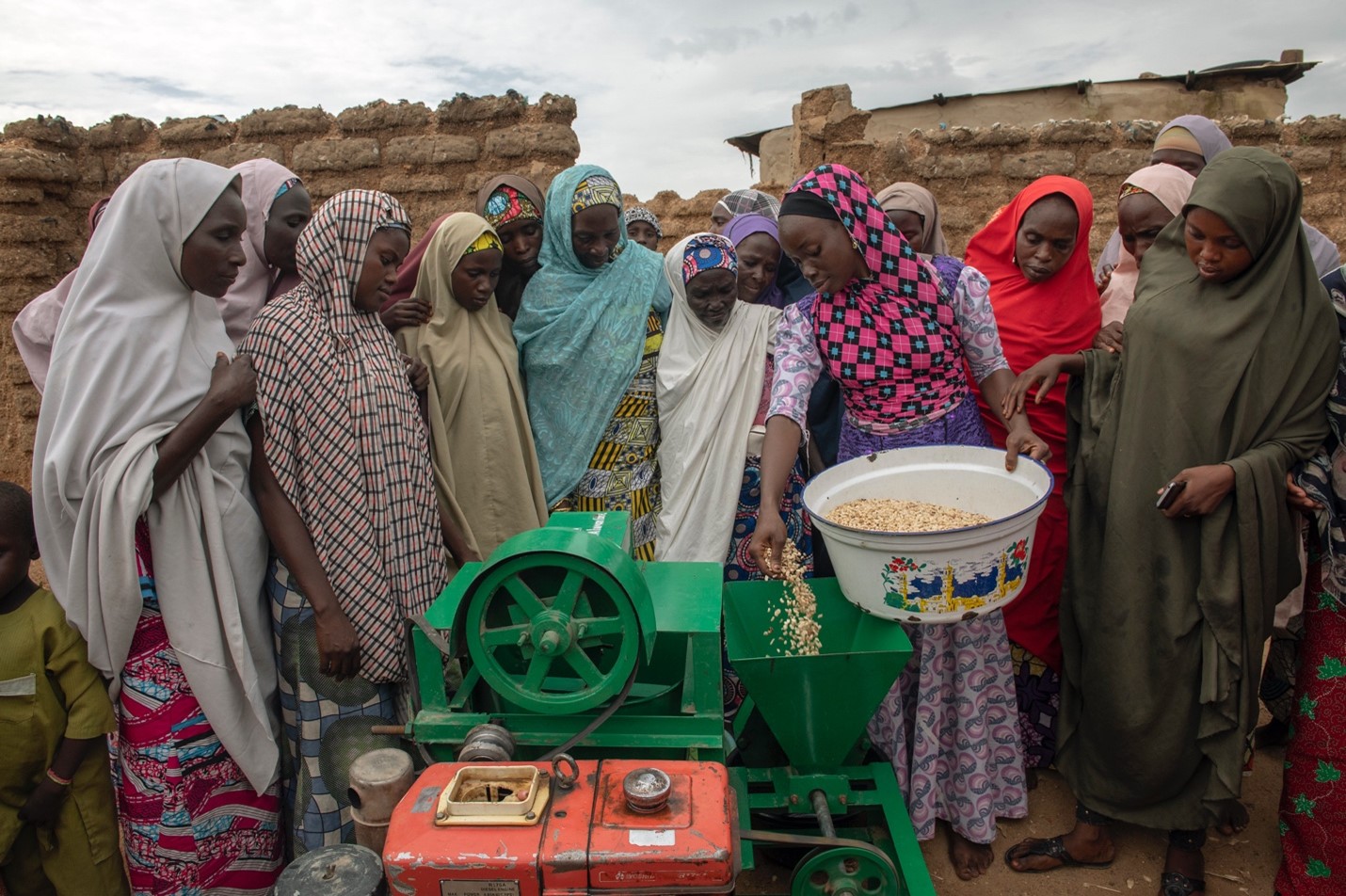Bridging the gap: Gender equity in the green transition
 ©2017CIAT/GeorginaSmith
©2017CIAT/GeorginaSmith
The transition away from high-emission technologies will impact all sectors and significantly transform the availability and potential quality of jobs. Globally, experts emphasize that the “green transition” depends on social equalization and gender equality. As the transition progresses, and given the important role that women could play in driving transformation, they will need to be supported to act as entrepreneurs, decision-makers, and consumers.
A multi-crop thresher that removes the grain or beans from up to eight crops has increased youth employment and reduced women’s drudgery in Tanzania. Developed by Imara Tech to be a gender-responsive solution, the machine can thresh eight bags of soybeans in one hour compared to a whole day beating the beans with clubs.
Women who used to clean and sort the beans now have more time to tend to other business, including taking on more entrepreneurial roles.
It is this sort of investment in gender-responsive solutions that was highlighted in the recent Sankalp Africa Summit, alongside other equally inspiring and relatable use cases that provide practical approaches and models.
Each year the Summit focuses on sustainably solving global challenges within the entrepreneurial ecosystem using collaborations. This year, it was held in Nairobi (28–29 February) and a session titled ‘Bridging the Gap: Gender Equity in the Green Transition’ built on examples and case studies from the IDRC-funded ‘Business Acceleration through Gender Mainstreaming Accelerator’ program, as well as research and development organizations like the CGIAR and others.
The transition away from high-emission technologies will impact all sectors and significantly transform the availability and potential quality of jobs. The session, with a diverse panel of researchers, entrepreneurs and development partners examined ways to incentivize the private sector, investors and development partners to prioritize economic and social outcomes for women as part of transition strategies to a green economy.
Making a business case for gender mainstreaming
Natasha Ezekiel from Rise Sustainability Consulting spoke about male-dominated companies missing out on profits. She pointed to the fact that the top companies with the most diverse executive leadership teams, which include women, are more profitable than the bottom companies without such diversity.
“Excluding women from the workforce can lead to missed opportunities for development,” she said. “A McKinsey study estimated that achieving parity in the workforce could add as much as $12 trillion to the global economy.”
However, Ezekiel also said that to support the business case for gender mainstreaming, it is important to establish institutional structures with gender leaders who can ensure training is appropriate to gender needs and that gender programs are implemented.
Winnie Osulah, a Gender Integration Lead at the Alliance for a Green Revolution in Africa (AGRA), agreed that institutional strengthening and development and making a business case for gender strengthening in the private sector is important. However, she pointed to the need to embed policy or employment regulation initiatives as a next vital step.
This means focusing on how to turn evidence about women’s needs into action. “We then need to look at how that translates into the [institutional] systems themselves; that’s where the policy comes in,” she added.
Osulah also stressed the importance of giving women a voice in the process of institutional strengthening and policy development: “If you are doing something for me, but without me, then it means it is not for me in the first place. The point of inclusion is to ensure that women have a voice in the processes that are impacting their lives.”

Speakers at the Sankalp Africa Summit session on 'Bridging the Gap: Gender Equity in the Green Transition'. L-R: Rob Madziva, Natasha Ezekiel, Eileen Nchanji, Stella Kimani, Winnie Osulah and Thomas Jaeschke. Photo: V. Atakos (CGIAR)
Research with people to increase understanding
Dr. Eileen Nchanji, a gender specialist, showcased how the work of the CGIAR through its GENDER Impact Platform is helping close gender gaps for more inclusive and diverse green workforces.
Nchanji works with the Alliance of Bioversity International and International Center for Tropical Agriculture in the Pan Africa Bean Research Alliance program.
“The place for research,” Nchanji observed, “is to first understand the different roles of women and men, the gender differences, the norms that control them, and the constraints.”
The next steps, Nchanji said, are far from ‘academic’: “Then, it’s not about sitting in an office and saying you understand a community. It has to be participative—getting people to state their problems and their ideas for solutions.”
“For sustainability, researchers need to co-design and co-create with people, so the people themselves own it—something they’ve put on the table and said, ‘This can change our livelihoods.’”
Involving women makes business sense
Rob Madziva from Agri fintech start up Digital Mobile Africa (DMA) agrees on the imperative of involving people, especially women, throughout. “We are intentional about involving women because about 65% of our customer base is women.”
Many of DMA’s services are applied through farm field schools and community demonstration plots where the community can come to learn how to grow certain types of crops.
“At the demonstration plots, we ask women to lead sessions. For example, women could be showing men how to use a mechanical planter,” he explained. “Because of this exposure to the women’s skills and experience, we have seen an uptake in women being involved in the leadership of farmer producer organisations due to their technical knowledge.”
Madziva also noted the importance of male engagement in gender integrating and gender mainstreaming. “Men are often the ‘gate keepers’ in communities. It is important to empower men to understand that when women are in traditionally male spaces such as farmer organisations, it is not about the women taking the place of men. It is about working collaboratively.”
Equalling the opportunities
Thomas Jaeschke is a Project Team Leader at GIZ and part of the Employment for Woman for the Green Transformation in Africa. He works in green sectors: regenerative or sustainable farming, renewable energies, waste management, the circular economy, ecotourism and green construction and transport.
Providing opportunities to integrate women into these sectors can be difficult. “Some sectors such as ecotourism or agriculture are already well represented by women”, Jaeschke said. “But it can be challenging in sectors such as renewable energy or construction. There, our aim is not to achieve high numbers, but to be as transformative as possible, for example by increasing the number of women in solar generation from 20% to 30%, which we would consider a success.”
Jaeschke said his program’s main goal is to not only create more jobs in the green economy, but to make existing jobs better in terms of wages and conditions. This also means making sure that successful models can be replicated or made bigger to reach more women. To do this, the program takes an integrated approach: considering labour markets on the supply side; and promoting skills and capacities on the demand side.
Women as drivers of change
Speakers at this year’s Sankalp Africa Summit agreed on the importance of including women as drivers of change.
Women’s empowerment, voice, and agency in environmental management and sustainable development initiatives only happens when they take a lead in decision-making processes. This means they need to be given critical roles in governance structures so they can drive the right gender-responsive strategies for change.

As the transition to the green economy progresses, women need to be supported and promoted to act as change agents while being entrepreneurs, decision-makers, and consumers. Photo by C. de Bode/CGIAR